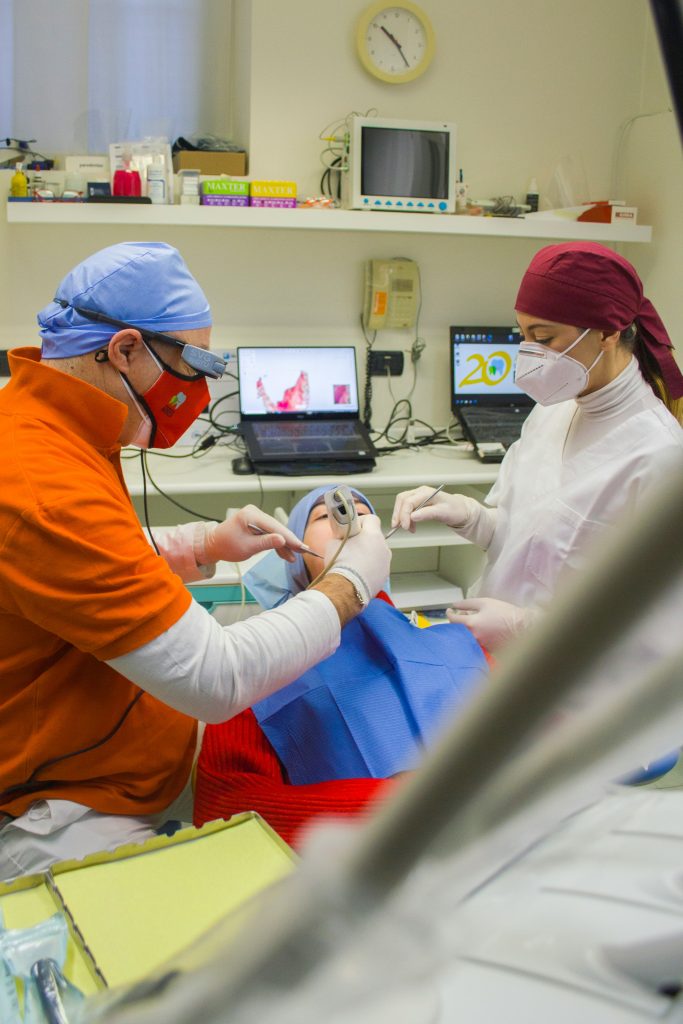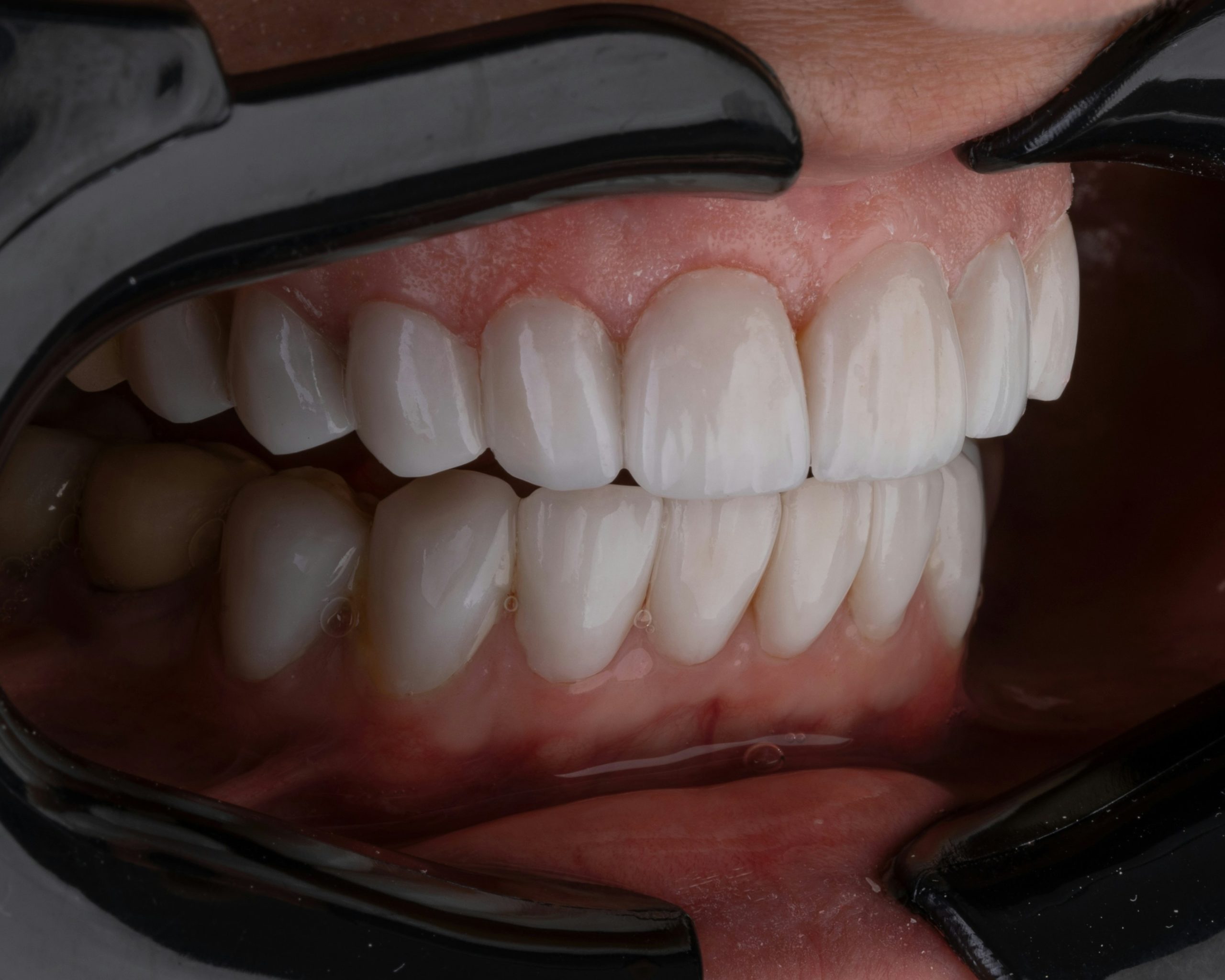Wisdom teeth, the last set of molars to emerge, can sometimes cause discomfort and dental issues. This is often due to a lack of space in the mouth, leading to impacted wisdom teeth.
Impacted wisdom teeth can result in pain, infection, and other complications. To prevent these issues, dentists often recommend wisdom tooth removal.
This procedure, typically performed by an oral surgeon or experienced dentist, involves the extraction of one or more wisdom teeth. It’s a common procedure with a high success rate, but it’s not without its risks and considerations.
In this essential guide, we’ll delve into everything you need to know about wisdom tooth removal. From understanding why it may be necessary, to the procedure itself, recovery tips, and managing wisdom teeth pain.
We’ll also discuss potential risks, cost considerations, and when to contact your dentist post-removal. Our aim is to provide comprehensive information to help you understand and prepare for wisdom tooth removal.

Understanding Wisdom Teeth and Their Impact
Wisdom teeth are the last molars to appear, typically surfacing in late adolescence or early adulthood. They are named for the age when they generally emerge. While not everyone develops wisdom teeth, those who do can experience varying levels of discomfort.
For some, wisdom teeth emerge without issue. However, others may face dental challenges due to space constraints in the mouth. When wisdom teeth don’t have enough room to grow, they become impacted. Impacted teeth may grow at an angle, pressing against other teeth.
The consequences of impacted wisdom teeth can be painful and disruptive. Common symptoms include swelling, jaw pain, bad breath, and difficulty opening the mouth. In some cases, infections may develop, further complicating oral health.
Here’s why wisdom teeth can be problematic:
- Insufficient room leads to impaction.
- Impacted teeth may cause pain and swelling.
- Misalignment can affect adjacent teeth and cause crowding.
Wisdom tooth removal becomes necessary to prevent these issues. Dentists often advise removing them before complications escalate. Understanding the potential problems with wisdom teeth is the first step in managing oral health effectively.
Signs You May Need Wisdom Tooth Removal
Recognizing the signs that indicate the need for wisdom tooth removal is crucial for maintaining oral health. One of the most common indicators is persistent pain at the back of the mouth. This pain can radiate to the jaw and even cause headaches.
Swelling around the jaw and gums is another telltale sign. If you notice swelling, it may signal an infection or impaction. Red, inflamed gums often accompany this swelling and can make eating or speaking uncomfortable.
Difficulty opening your mouth is also a significant warning sign. When wisdom teeth push against other teeth or the jawbone, it can limit your ability to open your mouth fully. Additionally, if you experience bad breath or a bad taste in your mouth, it could point to an infection related to wisdom teeth.
Responding promptly to these symptoms by consulting a dental professional can prevent further complications. Early intervention is key to avoiding prolonged discomfort and safeguarding your dental health.
The Wisdom Tooth Removal Procedure Explained
The wisdom tooth removal process is methodical and typically straightforward. Dentists or oral surgeons often perform the procedure. It usually begins with a thorough examination, which often includes X-rays to assess the position of the teeth. This helps in planning the safest approach for extraction.
Before the procedure, patients receive anesthesia to ensure comfort. The type of anesthesia can vary. Options include local anesthesia to numb the area, sedation to relax the patient, or general anesthesia for more complex cases.
The extraction process involves several key steps. First, the dentist makes an incision in the gum tissue. Then, any bone covering the tooth is gently removed. In some cases, the tooth might be divided into sections for easier removal, especially if it is impacted.
Once the tooth or tooth sections are removed, the site is cleaned thoroughly. The dentist may suture the gum tissue, depending on the situation. Finally, gauze is placed over the extraction site to manage bleeding and help a blood clot form.
The procedure generally lasts about 45 minutes to an hour, but this can vary. Although it sounds complex, wisdom tooth removal is a routine dental procedure. Millions undergo it yearly with high success rates and minimal complications.
Preparing for Your Wisdom Tooth Extraction
Preparing for wisdom tooth extraction is crucial for a smooth procedure. Begin by discussing any medications you take with your dentist. They will advise if adjustments are necessary.
Ensure you arrange transportation. Anesthesia can impair your ability to drive safely after the procedure. Having someone with you is also comforting. Additionally, stock up on soft foods, as you’ll need them during recovery.
Finally, follow any specific instructions from your dentist. These might include fasting if general anesthesia is used or discontinuing certain medications. Proper preparation sets the stage for a successful extraction and recovery.
During the Extraction: What to Expect
During the wisdom tooth extraction, you can expect a calm and professional environment. The dentist or surgeon will begin by numbing the area with anesthesia. This ensures you feel no pain throughout the procedure.
You’ll likely hear some sounds like dental instruments working. These sounds are normal and no cause for concern. The dentist will work methodically, ensuring the safe removal of the tooth.
The extraction itself is usually quick. Most extractions take less than an hour, although complex cases may take longer. The team will update you on progress, and any discomfort should be minimal.
You’ll receive immediate post-extraction care instructions once the tooth is removed. The team will ensure you understand how to manage any initial soreness or bleeding. Understanding what to expect can ease anxiety and help you remain relaxed throughout the procedure.
Post-Extraction Care and Recovery
Caring for yourself after wisdom tooth extraction is crucial. Following your dentist’s post-operative instructions helps ensure a smooth recovery and prevents complications. Initial steps include gently biting down on gauze to control bleeding. This should be replaced every 30 minutes until the bleeding stops.
Rest is vital. Plan to take it easy for at least 24-48 hours after surgery. Avoid strenuous activities that might delay healing. Stick to a diet of soft foods like yogurt, applesauce, and mashed potatoes. This gentle approach helps avoid irritation at the extraction site.
Pain management often involves over-the-counter pain relievers. Your dentist might also prescribe medication for more severe discomfort. Expect some swelling and bruising, which is normal and should subside within a few days. Applying ice packs to your cheek can help reduce swelling.
Keeping the extraction site clean is important. Begin gently rinsing your mouth with saltwater after 24 hours to aid healing. Avoid brushing directly near the site for a few days to prevent disruption of the healing process.
Be mindful not to disturb the area with your tongue or fingers. Smoking and using straws should be avoided as the sucking motion can dislodge the blood clot. This could lead to a painful dry socket and delay healing.
Include a multivitamin in your diet. This ensures you’re getting the necessary nutrients to promote healing. Stay hydrated by drinking plenty of water. However, avoid alcohol, caffeine, and carbonated drinks that can irritate the wound.
In about a week, most patients return to their normal routines. Be sure to attend any follow-up appointments to monitor your progress. Following these care tips diligently will minimize complications and speed up your recovery.
Managing Wisdom Teeth Pain Before and After Removal
Wisdom teeth can often cause discomfort before removal. This discomfort is typically due to their eruption or impaction. The pain might manifest as swelling or tenderness around the gums. Over-the-counter pain relievers, like ibuprofen, can help manage this pain. Cold compresses can also reduce swelling and alleviate discomfort.
Effective pain management continues post-removal. After the procedure, you might experience some soreness. Your dentist will provide specific medications or recommendations for managing this discomfort. These might include prescription pain relievers if the pain is more significant.
Maintaining a soft food diet helps in reducing irritation. Consuming foods like smoothies, soups, or mashed vegetables can prevent disturbing the extraction site. These soft options help manage post-surgical pain by avoiding pressure on the healing areas.
Additionally, adhere to all post-operative care instructions. This adherence not only aids recovery but also minimizes pain. Keep the area clean, avoid irritants, and contact your dentist if pain persists. Proper care leads to a more comfortable and quicker recovery.
Potential Risks and Complications
Despite being a common procedure, wisdom tooth removal carries certain risks. These risks might include infection at the extraction site. Symptoms of infection can include fever, swelling, or persistent pain.
Another potential complication is dry socket. This condition occurs when the blood clot in the socket dislodges. It can cause significant discomfort and delay healing.
Rarely, patients might experience nerve damage. This can result in temporary numbness around the lips, tongue, or chin. Discuss these risks with your dentist or oral surgeon. Understanding potential complications aids in prompt recognition and treatment if they arise.
Cost and Insurance Considerations for Wisdom Tooth Removal
The cost of wisdom tooth removal can vary significantly. Factors like the complexity of the extraction and your location play a role. Typically, the procedure can range from a few hundred to over a thousand dollars.
Dental insurance may cover some or all of the costs. However, coverage often depends on your plan and the specifics of your case. It’s important to check with your provider to understand your benefits.
For those without insurance, payment plans might be an option. Many dental offices offer financing solutions to make the procedure more affordable. Discussing costs and payment options with your dentist beforehand is crucial.
When to Contact Your Dentist or Surgeon Post-Removal
After wisdom tooth removal, it’s essential to know when to reach out for help. Some symptoms might indicate complications and require professional attention. For instance, if you experience severe pain that doesn’t subside with medication, contact your dentist or surgeon.
Look out for signs of infection like fever or unusual swelling. Pus or persistent bleeding at the extraction site is also a reason to seek advice. Timely intervention can prevent further issues.
If you notice numbness or a change in sensation in your mouth that doesn’t improve, inform your dental professional. Early communication ensures appropriate treatment and a smoother recovery process.
FAQs About Wisdom Tooth Removal
Many people have questions about wisdom tooth removal. Here, we’ll address some of the most common concerns. Understanding these can ease any anxiety you might have.
Why is wisdom tooth removal necessary?
Wisdom teeth can cause dental problems when there isn’t enough room for them to grow. Removal helps prevent pain and infections.
What can I eat after the procedure?
A soft diet is recommended initially. Foods like yogurt, applesauce, and mashed potatoes are gentle on the extraction sites.
How long is the recovery?
Recovery typically takes a few days to a week. Most people return to normal activities within this timeframe.
Here’s a list of some more FAQs you might find useful:
- Can wisdom teeth grow back?
- What are the signs of a dry socket?
- Is it possible to avoid swelling after removal?
Having these questions answered can help you feel prepared and informed about the wisdom tooth extraction process.




Leave a Reply